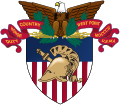
The United States Military Academy (USMA), also known as West Point, Army, Army West Point, The Academy, or simply The Point, is a four-year federal service academy in West Point, New York. It was originally established as a fort, as it sits on strategic high ground overlooking the Hudson River with a scenic view, 50 miles (80 km) north of New York City. It is the oldest of the five American service academies and educates cadets for commissioning into the United States Army.

The United States Naval Academy is a federal service academy adjacent to Annapolis, Maryland. Established on 10 October 1845, under Secretary of the Navy George Bancroft, it is the second oldest of the five U.S. service academies, and educates officers for commissioning primarily into the United States Navy and United States Marine Corps. The 338-acre (137 ha) campus is located on the former grounds of Fort Severn at the confluence of the Severn River and Chesapeake Bay in Anne Arundel County, 33 miles (53 km) east of Washington, D.C., and 26 miles (42 km) southeast of Baltimore. The entire campus is a National Historic Landmark and home to many historic sites, buildings, and monuments. It replaced Philadelphia Naval Asylum, in Philadelphia, that served as the first United States Naval Academy from 1838 to 1845, when the Naval Academy formed in Annapolis.

The "Marcha Real" is the national anthem of Spain. It is one of only four national anthems in the world that have no official lyrics.

"Taps" is a bugle call during flag ceremonies and at military funerals by the United States Armed Forces. The official military version is played by a single bugle or trumpet, although other versions of the tune may be played in other contexts. It is also performed often at Girl Guide, Girl Scout, and Boy Scout meetings and camps. The tune is also sometimes known as "Butterfield's Lullaby", or by the first line of the lyric, "Day Is Done". The duration may vary to some extent.

"Reveille", called in French "Le Réveil" is a bugle call, trumpet call, drum, fife-and-drum or pipes call most often associated with the military; it is chiefly used to wake military personnel at sunrise. The name comes from réveille, the French word for "wake up".
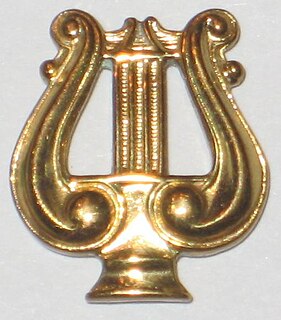
The Fightin' Texas Aggie Band is the official marching band of Texas A&M University. Composed of over 400 men and women from the school's Corps of Cadets, it is the largest military marching band in the world. The band's complex straight-line marching maneuvers are performed exclusively to traditional marches.
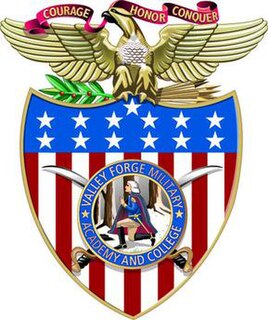
Valley Forge Military Academy and College (VFMAC) is a private college preparatory boarding school and military junior college in Wayne, Pennsylvania. It follows in the traditional military school format with Army traditions. Though military in tradition and form, the high school portion of VFMAC, Valley Forge Military Academy, is a college preparatory boarding institution specializing in student leadership. VFMAC's administration is composed almost entirely of current or retired military. The Board of Trustees is almost entirely alumni. Some graduates pursue careers in the armed services, and VFMAC has graduated one Rhodes Scholarship recipient. The school has established a tradition with the British Monarchy and follows an American military academy model and practices the American Army tradition.
"Tech Triumph" is the fight song of Virginia Tech. It was composed in 1919 by Wilfred Pete Maddux and Mattie Eppes (Boggs).
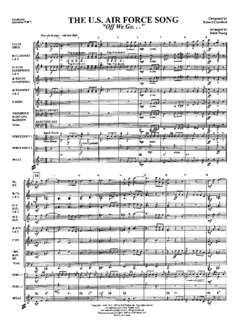
"The U.S. Air Force" is the official song of the United States Air Force, adopted in the late 1940s, and is often referred to as "Wild Blue Yonder".

La Salle Military Academy was a Catholic school with middle school/junior high school and high school divisions located in Oakdale, New York. It closed in 2001, and the school's extensive campus is now owned by St. John's University, located in nearby Jamaica Queens.
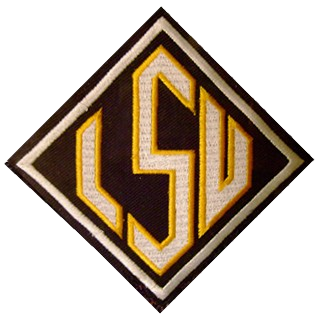
The Louisiana State University Tiger Marching Band is the marching band of Louisiana State University (LSU). The 325-member band performs at all LSU football home games, all bowl games, and all away games.

The alma mater of the University of Pittsburgh was adopted soon after the University changed its name in 1908 from the Western University of Pennsylvania to its current moniker. Lyrics were written by George M. P. Baird, class of 1909 and were set to the tune of what was then the Austrian National Anthem. A new tune for the "Alma Mater" hymn was composed by Charles W. Scovel, class of 1883, but it was not widely adopted and was either lost or became obscure.

In the United States, a Cadet Honor Code is a system of ethics or code of conduct applying to cadets studying at military academies. These codes exist at the federal service academies, such as the United States Military Academy and the United States Air Force Academy and at the senior military colleges, as well as other military schools and colleges. The United States Naval Academy and United States Coast Guard Academy have a related standard, known as the Honor Concept.

The United States Military Academy and grounds were declared a National Historic Landmark in 1960 due to the Revolutionary War history and the age and historic significance of the Academy itself. The majority of the buildings in the central cadet area are historic.
The history of the United States Military Academy can be traced to fortifications constructed on the West Point of the Hudson River during the American Revolutionary War in 1778. Following the war, President Thomas Jefferson signed legislation establishing the United States Military Academy (USMA) on the site in 1802. In 1817 the Academy was transformed by the appointment of Sylvanus Thayer who drastically reformed the curriculum.
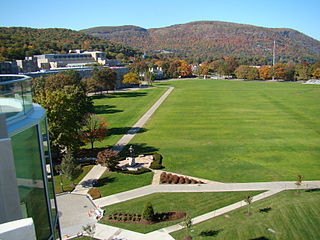
The Plain is the parade field at the United States Military Academy at West Point, New York. The flat terrain of the Plain is in contrast to the varied and hilly terrain of the remainder of the campus. The Plain rises approximately 150 feet (45 m) above the Hudson River and has been the site of the longest continually occupied U.S. Army garrison in America since 1778. In its early years, the entire academy was located on the Plain and it was used for varying activities ranging from drill and mounted cavalry maneuvers to an encampment site for summer training to a sports venue. Currently, the Plain refers to just the parade field where cadets perform ceremonial parades.

Sidney Bryan Berry was a United States Army Lieutenant General, Superintendent of West Point (1974–1977), and Commissioner of Public Safety for the state of Mississippi (1980–1984).

Mark Phillip Hertling is a former United States Army officer. From March 2011 to November 2012, he served as the Commanding General of United States Army Europe and the Seventh Army. Hertling served in Armor, Cavalry, planning, operations and training positions, and commanded every organization from Platoon to Field Army. He commanded the 1st Armored Division and Task Force Iron/Multinational Division-North in Iraq during the troop surge of 2007 to 2008.

For more than a century the Military Parade of Chile or Great Military Parade of Chile has been a tradition within the Independence Day holidays in Chile. It is held in Santiago, Chile's O'Higgins Park on September 19 yearly in honor of the Glories of the Chilean Army with a military parade involving not just the ground forces but by the rest of the Chilean Armed Forces: the Chilean Navy, the Chilean Air Force, and the Carabineros de Chile. It is also in honor of the anniversary of the formal inauguration on that day in 1810 of the First Government Junta, which witnessed the first military parade of the independent nation at the Plaza de Armas, Santiago. It is the final act of the national independence celebrations, which are broadcast through TV and the Internet and radio.



















